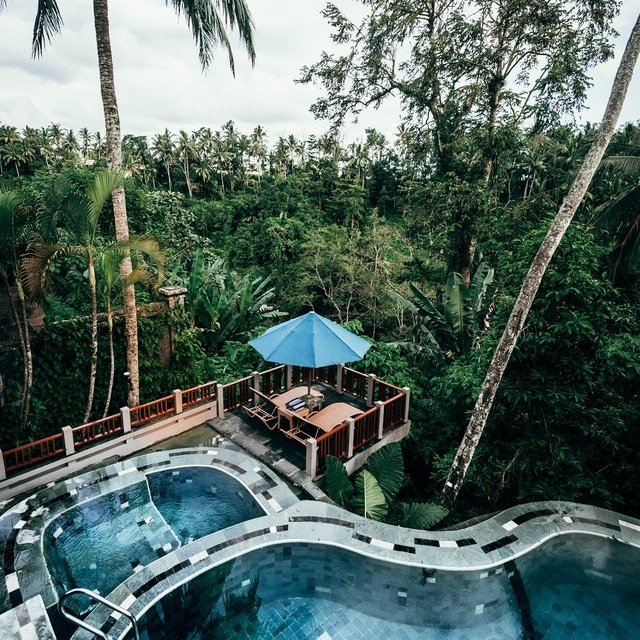Above Ground Pools
There are a handful of certainties in life. The sun rises in the east and sets in the west. Dogs enjoy barking and will do so frequently. Your Wi-Fi won’t work at tip-top shape 100 percent of the time. And lastly, the addition of a pool will increase a home’s value.
People like pools for several reasons. First, they’re great for playing and hanging out in, especially during exceptionally warm months. Second, they look great and add an aesthetic value. And third, they’re relaxing, in or out of the water. The mere presence of a pool is enjoyable and that’s why homes with pools sell for more than the same home would without one. So now that we’ve established how valuable a pool is, we’re going to zero in on a segment of pools that is growing in popularity - the above ground pool.
By the 1940s above-ground pool manufacturers were beginning to take shape. Atlantic Pools was experimenting with aluminum and steel framing coupled with synthetic fabric liners that acted like an internal sleeve, snapped or tied in place. Early versions lacked circulation systems and needed to be refilled and drained frequently. In the early 1960s circulation systems appeared and folks began to get more creative with different pool shapes. One of the benefits of an above-ground pool, as compared to a traditional below-ground pool, is you can get much more creative with the shapes and even the aesthetic design. And a secondary benefit is many times they’re much cheaper.
Before even considering an above-ground pool for your backyard, the first step is to inquire as to whether it’s legal in your neighborhood. Your local city website should have zoning laws and restrictions posted. If you belong to a homeowner’s association, they’re another good group to consult. Some folks with pools might not be breaking any zoning laws because they were installed before a certain. Yet, homes in the same neighborhood might not permit new pools after a certain date.
The next item to consider is where to put the pool. You likely have a piece of the backyard in mind, but most yards are not completely level, and as such, some work will have to be done in leveling an existing slope. You’ll also want to consider the amount of sunlight that will hit the pool and work around any existing trees. Trees provide great shade, but they’ll also be dropping leaves into the pool. This can be a hassle maintaining over time.
Size matters in the above-ground pool scene. It might be tempting to go as big as you can, but a pool that overwhelms a backyard is no fun. You also need to think of the upkeep and the amount of chemicals needed to keep the water safe for family and the little ones. Most above-ground pool companies will have these figures worked out for you. And lastly, consider this an investment. As we touched on earlier, if done correctly, the addition of a pool to your home will increase the value of the home. You might not have thought of selling your home, or perhaps just bought it. But at some point, you might need to vacate said house, and getting another $15,000 or more from a potential buyer is a nice perk.
Pool-time is always an enjoyable time. Go about this smartly, and you’ll be rewarded, guaranteed!


Comments:
Login to leave a reply